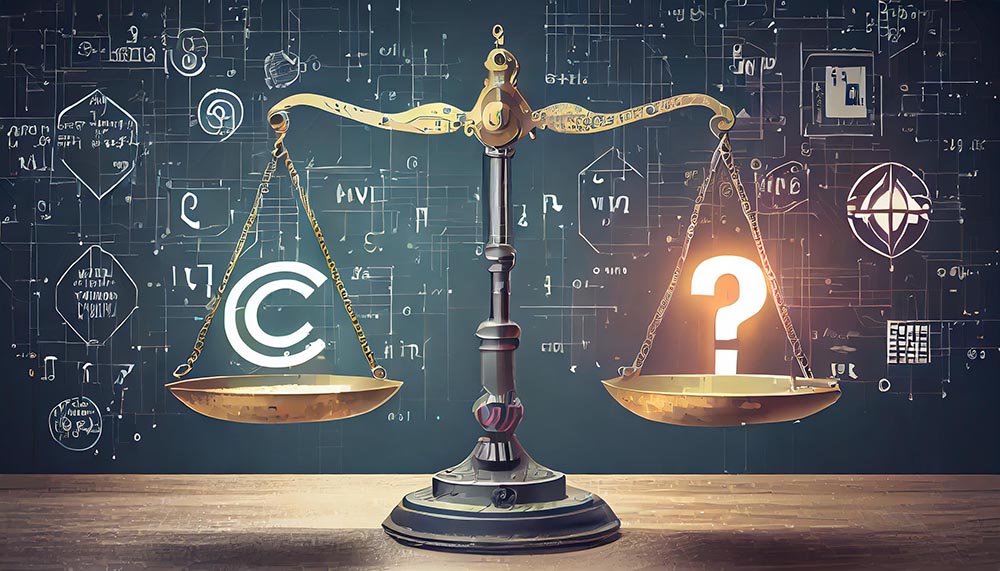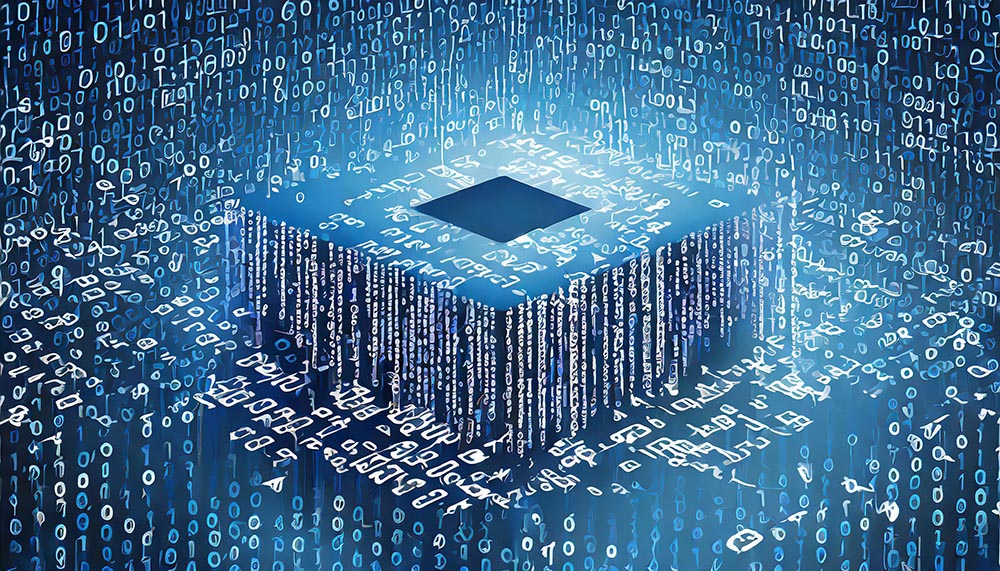Introduction
Artificial Intelligence (AI) presents new challenges in many legal areas. One of those areas is the copyright system that has been developed for a quite different world and era. Companies and other actors developing or applying AI systems face difficulties when trying to comply with copyright law. Those are present, especially in three fields:
- Can a copyright holder’s exclusive right to make copies prevent AI developers from using copyrighted works in training data,
- Is the output of a generative AI system copyrightable and who is the author if AI is employed in the areas that have traditionally required human creativity, and
- Are AI models copyrightable?
In this first part of the three-part posting, we analyse the right of copyright holders to prevent AI developers from using copyrighted works in training data, in particular from the perspective of EU law.

Exclusive rights to prevent training AI
Creative works are protected by copyright. National laws, EU directives, and international treaties govern it. Anything original and expressed is protected by copyright. The work does not need to be registered or copyright noticed (e.g. © mark) nor does it need to be artistic either. The original subject matter must be the author’s intellectual creation, and only the elements that are the expression of such creation are copyrighted. The author must have made creative choices while making the work.1
For example, writing a longish text like a novel typically includes creative choices as the author chooses which words to use and in which order to put them. On the other hand, any single word of that work is not copyrightable. Therefore, larger texts and even longer extracts often include enough originality that they are copyrighted, but a single word or few words taken out of the text are not.
What does this mean from the AI perspective? In machine learning, statistical models are trained using large amounts of data, e.g. text or images. The model then includes information on the probabilities of collocations of different words or elements of an image. To be more exact, in relation especially to Large Language Models (LLM), the original training text is replaced with tokens (unique numeric representation of each word) after which the model is trained to predict the most likely next token. When the model is used, a prompt text is given as an initial context that is then used similarly to predict the following sequence of tokens. Finally, those tokens are converted into words and sentences. Using such a model, a generative AI system, for example, can produce texts or images that resemble those created by human authors.
From the point of view of copyright, the first question is whether anything relevant to copyright is happening in the process. Mere reading text or looking at pictures does not infringe copyright. Similarly, copying individual words or their tokens does not infringe copyright because, as noted above, individual words are not copyrightable. Copying larger sets of text or a whole image may infringe copyright. Thus, training a model may or may not infringe copyright, depending on the training algorithm: whether the training involves copying the author’s creative choices or analysing the distance between individual words. A typical, slightly simplified machine learning process consists of reading the text, stripping out potential non-important characters, and converting the result into a token series. After this, the results are typically stored as token vectors for the learning process that is then repeated multiple times over. Alternatively, the material is first stored as is and then converted on the fly during learning, but this is a much more inefficient approach than the previous one. It is likely that the token vectors also include the results of the creative choices that the original author has made. Therefore, still depending on the algorithm, it is plausible that a machine learning process makes copies of original works and is therefore relevant from the copyright perspective.
At the time of writing this, The New York Times has just sued OpenAI and Microsoft for copyright infringement. In one example of how AI systems use The Times’s material, the media house claimed that ChatGPT reproduced almost verbatim results from Wirecutter, The Times’s product review site.2 OpenAI on the other hand denies that. The company says they have measures in place to limit inadvertent memorization and prevent regurgitation in model outputs.3 We don’t yet know how the dispute will end, but if The Times is right, OpenAI’s ChatGPT will likely infringe copyright. It would be difficult to understand how the software output contains “almost verbatim” copies of the training data if they are not copied into the model first. On the other hand, if OpenAI is right, it is much harder to tell whether anything copyright-relevant is happening in the process.

Exceptions to allow training
The second question is, if training a model is copyright-relevant, is there an exception or a limitation in the copyright law that would still allow training?
The strong exclusive rights, e.g. the right to copy, to modify, to sell, and to display the work, that the copyright law provides to authors, have been tried to balance by exceptions and limitations. They vary from country to country. Often, they are enumerated in a copyright statute, but e.g. in the USA, they are included in fair use doctrine, an open limitation on copyright. Typically, the exceptions include acts of reproduction by libraries, educational establishments, museums or archives, and ephemeral recordings made by broadcasting organizations, illustration for teaching or research purposes, for the benefit of handicapped persons, for making current events available to the public, and for the purpose of citation or caricature. Especially, in many countries, it is legal to make copies of copyrighted works for private use. Recently, in Art 4 of the DSM directive4, the EU has required that the member states shall provide for an exception or limitation to copyright for reproductions and extractions of lawfully accessible works for the purposes of text and data mining unless the use of works has been expressly reserved by their rightsholders in an appropriate manner. Text and data mining in research organisations and cultural heritage institutions cannot be limited with such a reservation (Art. 3).
It should be noted that the copyright holder’s exclusive right is the main rule and exceptions and limitations should be interpreted narrowly. Therefore, the exception or limitation on text and data mining should not be interpreted more broadly than how it is explicitly expressed in the Directive. An interesting question is whether text and data mining in this context include machine learning training processes. In Art 2, it is defined that ‘text and data mining’ means any automated analytical technique aimed at analysing text and data in digital form in order to generate information which includes but is not limited to patterns, trends and correlations. It seems that most experts agree that this definition covers also machine learning. At the time of writing this, we do not yet have the final wording of the AI Act, but based on current drafts, it appears that the AI Act will include a clarification that the data mining exemption in the DSM Directive applies to the training of AI. Therefore, although we cannot be sure until the European Court of Justice (ECJ) takes a stand on the issue, we presume that using copyrighted works to train artificial intelligence is allowed in accordance with DSM directive Art. 3 and 4.
From that perspective, training of a model with data that includes copyrighted works, would be lawful unless the use of works has been expressly reserved by the rightsholders. However, that does not make it legal to develop a generative AI system that generates copies of copyrighted works. Making unauthorized copies would not be legal just by claiming that the copy machine includes AI software!
Conclusions
To conclude our finding of this Part I, it seems that depending on the algorithm, machine learning process can be relevant from the copyright perspective. If the training involves copying the creative choices made by the original author of a copyrighted work in the training data, it could violate the author’s exclusive rights. On the other hand, if the machine learning process can be considered as data mining, it can be within the limitation or exception defined in the DSM directive and therefore lawful within the EU. Yet, if the output of a generative AI system includes copies of the works in the training data, that cannot be justified by that limitation or exception.
In the following parts, we’ll first discuss the authorship of AI generated content and then complete this three-part posting with ideas on copyright in AI models.
1001 Lakes’ experts are happy to discuss these topics with you if you have concerns of AI and copyright or how to develop and use AI in compliance with the copyright law.
 Olli Pitkänen,
Olli Pitkänen,  Sami Jokela,
Sami Jokela,  Waltter Roslin,
Waltter Roslin,